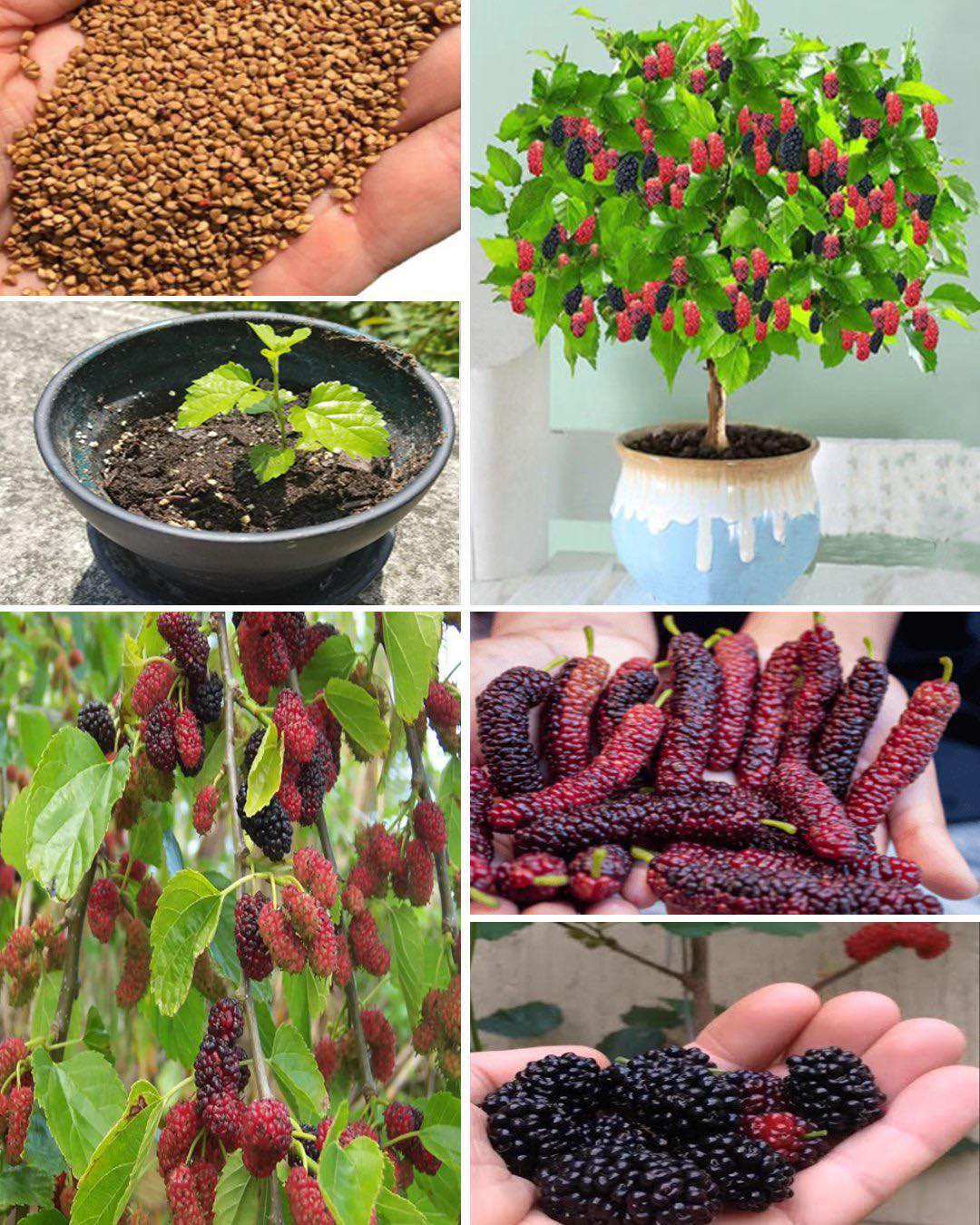Mulberry trees are renowned for their delicious fruits and elegant foliage. While they’re commonly grown outdoors, it’s also possible to cultivate them indoors, allowing even urban dwellers to enjoy their benefits. If you’re keen on nurturing your own indoor mulberry tree from seed to fruit, here’s a comprehensive guide to help you through every stage of the process.

Selecting the Right Seeds
The journey to growing a mulberry tree indoors begins with choosing the right seeds. Opt for fresh seeds from a reliable source or collect them from mature mulberry fruits. Ensure the seeds are ripe and healthy, as this significantly enhances the chances of successful germination.
Preparing the Seeds for Germination
To increase germination rates, it’s beneficial to scarify or stratify the seeds. Scarification involves lightly scratching the seed coat to allow moisture to penetrate, while stratification mimics winter conditions by exposing the seeds to cold temperatures for a period.
Germination Process
Mulberry seeds typically germinate within 1 to 3 months, although some varieties may take longer. Plant the scarified or stratified seeds in a well-draining potting mix and keep them consistently moist. Place the pot in a warm, sunny spot, ensuring it receives ample sunlight for optimal growth.
Seedling Care
Once the seeds germinate and seedlings emerge, provide them with adequate care to promote healthy growth. Maintain consistent moisture levels, but avoid overwatering, as this can lead to root rot. Fertilize the seedlings with a balanced fertilizer to provide essential nutrients for robust development.
Transplanting
As the seedlings outgrow their initial pots, it’s time to transplant them into larger containers. Choose pots with sufficient drainage holes and fill them with nutrient-rich potting soil. Gently remove the seedlings from their original pots, taking care not to damage the delicate roots, and transplant them into the new containers.
Pruning and Training
To encourage a strong and well-shaped mulberry tree, prune and train the young plant as it grows. Remove any dead or damaged branches and shape the tree to your desired form. Consider using stakes or trellises to support the growing branches and promote upward growth.
Pollination
While outdoor mulberry trees rely on wind and insects for pollination, indoor trees may require manual assistance. To ensure successful fruiting, gently shake the branches or use a soft brush to transfer pollen between flowers.

Fruit Production
With proper care and attention, indoor mulberry trees can begin producing fruits within 2 to 3 years. Harvest the ripe fruits as they turn dark purple or black, indicating maturity. Mulberries are best enjoyed fresh or used in a variety of culinary applications, including jams, pies, and smoothies.
Growing mulberry trees indoors from seed to fruit is a rewarding endeavor that allows you to enjoy the beauty and bounty of these remarkable trees regardless of your living space. By following these steps and providing the necessary care, you can successfully cultivate your own indoor mulberry tree and savor its delicious fruits for years to come.
News
JJ Redick reacts to Luka Doncic trade for Anthony Davis
In one of the most jaw-dropping moves of the season, the NBA landscape was rocked by the blockbuster trade involving Luka Dončić and Anthony Davis—a swap that has sent ripples of excitement, disbelief, and heated discussion through the league. Among…
Anthony Davis FULL reaction to trade to Mavericks for Luka Doncic
In a blockbuster move that sent shockwaves through the NBA and left fans reeling, Anthony Davis has been traded to the Dallas Mavericks in exchange for Luka Dončić. In the immediate aftermath of the news, Davis took to the media…
Shaq reacts to Dallas Mavericks wanting Kevin Durant after Luka-AD trade 👀
In the constantly shifting world of the NBA, trade rumors and blockbuster moves are a regular part of the season’s drama. The latest twist has fans buzzing: the Dallas Mavericks have reportedly set their sights on acquiring Kevin Durant in…
Donovan Mitchell FILTHY poster dunk on Kristaps Porzingis 😳
In a game filled with high-intensity moments and jaw-dropping highlights, one play in particular has left fans and analysts buzzing about Donovan Mitchell’s latest display of athleticism. Early in the contest, with the atmosphere already charged by an evenly matched…
Joel Embiid hits go-ahead bucket vs Mavs then chats with Anthony Davis after game
In one of the most thrilling contests of the season, Joel Embiid delivered a clutch performance against the Dallas Mavericks, punctuating the game with a go-ahead bucket that sent the home crowd into a frenzy. The atmosphere in the arena…
D’Angelo Russell game winner as Nets hit two 3’s in 3 seconds to win vs Rockets 😱
In one of the most electrifying moments in recent NBA history, D’Angelo Russell delivered an unforgettable game-winner that left fans and commentators in complete awe. With the Brooklyn Nets locked in a tense battle against the Houston Rockets, the outcome…
End of content
No more pages to load











